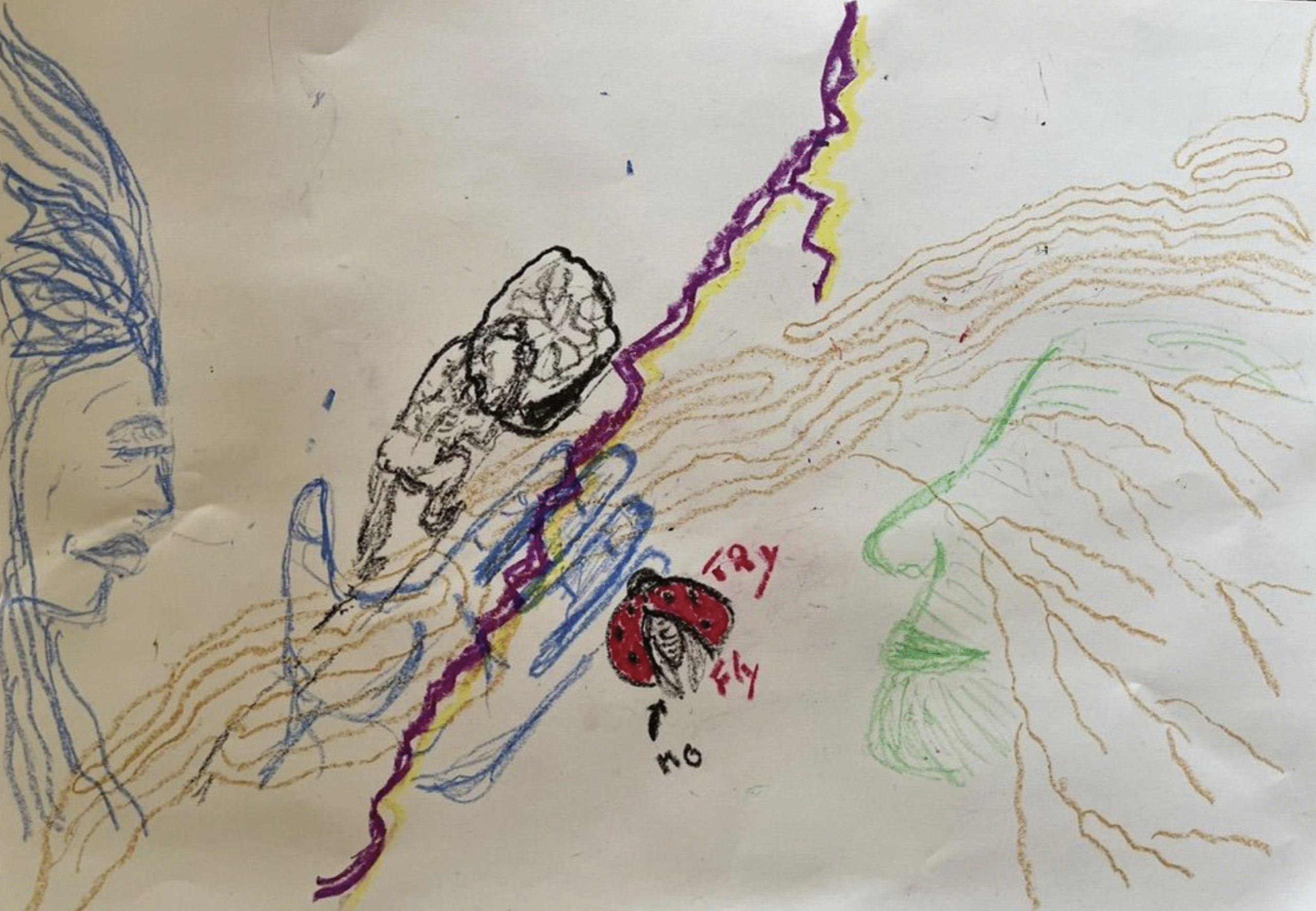Francisca Niklitschek
Contributing Authors
Dmitrij Achelrod PhD
Francisca Niklitschek
We breathe around twenty thousand times a day, mostly without noticing. But the moment we bring awareness to that simple act, something shifts. The breath becomes a bridge between the mind and the body, between what we think and what we feel. It’s a language our nervous system understands instantly.
In our previous articles, we explored how the nervous system works, and how meditation and nature helps us find balance. Breathwork is another way of doing that, one that requires nothing but a few moments of presence. A few conscious breaths can soften tension, clear mental fog, and remind us that calm is already within reach, in the space between each inhale and exhale.
So as you read on, take a slow breath in. Let it out gently. Feel how that small act already starts to change something inside you.
The Science Behind Breath and the Nervous System
You’ve probably noticed how your breath changes with your emotions. When you’re stressed or rushing, it gets short and shallow. When you finally exhale in relief, that deep sigh after finishing something important, your whole body softens.
Our breath is one of the most direct ways to influence our autonomic nervous system [1], [2] – the part that runs in the background, regulating things like heart rate, digestion, and blood pressure, as we learnt in the first blog of this series.
A key player here is the vagus nerve, a long wandering nerve that connects your brain with your body’s major organs. When you slow down your breath and especially when you lengthen your exhale, you send a signal through this nerve that says: “It’s safe now.” Your heart rate slows, your muscles release tension, and your mind begins to quiet [3], [4], [5], [6].
In other words: your breath is your built-in regulation tool. Always available, completely free, and deeply powerful, if you remember to use it.
Recognizing Your Breath Patterns
Before we try to change our breath, it helps to first notice it. Take a moment right now before reading further, and just observe.
How are you breathing? Is your inhale short or full? Do you feel the movement more in your chest or your belly? Are you even exhaling completely?
Our breath mirrors our inner state. When we’re anxious, it becomes shallow and fast, often high in the chest. When we’re calm or focused, it naturally slows down and deepens. Simply noticing this relationship begins to restore agency, it reminds us that our state is fluid, and we have a say in it.
You might also notice certain “signatures” in your daily rhythm. Maybe your breath tightens during work calls. Maybe it opens when you step outside or talk to someone you trust. These small observations are powerful: they’re data from your body.
Regulation starts with awareness. So the next time you catch yourself holding your breath or sighing, pause for a second. That’s your nervous system speaking. And the beautiful thing is that you can speak back, one breath at a time.
Simple Breathwork Techniques for Everyday Regulation
You don’t need a dedicated meditation corner or a long practice to benefit from conscious breathing. The most effective tools are often the simplest: short, intentional breaths that meet you exactly where you are: in your living room, at your desk, or during a walk outside.
Below are a few techniques you can begin with. Each has been studied for its effect on the nervous system and emotional balance. Let’s guide your body back to safety and presence:
The Quick Reset
When you feel overwhelmed or anxious, try this simple yet powerful pattern:
- Inhale through your nose twice: one deep inhale followed by a shorter top-up, then exhale slowly through your mouth. Repeat 2–3 times.
- Use it when: you feel pressure building up, during transitions between tasks, or before sleep.
This pattern naturally occurs when we cry or release tension. It’s the body’s built-in mechanism to offload carbon dioxide and calm the system. Research shows that a few rounds of physiological sighing can reduce physiological arousal and perceived stress within minutes [7], [8], [9].
Box Breathing
This is one of the simplest ways to restore focus and presence:
- Inhale for 4 seconds, hold for 4, exhale for 4, hold for 4. Repeat for 1–2 minutes.
- Use it when: you need to ground yourself before a conversation, while waiting, or when your mind feels scattered.
Box breathing (also called “square breathing”) is used in mindfulness, therapy, and even tactical training for its stabilizing effect on the nervous system [7], [8], [9]. It balances oxygen and carbon dioxide levels while activating the parasympathetic system, helping your heart and mind settle into rhythm [10].
Extended Exhale Breathing
If your mind is racing, lengthen your exhale.
- Inhale for 4 counts, exhale for 6–8.
- Use it when: winding down at night, after intense work, or any moment your body needs to release tension.
Keep your breath smooth and gentle, no force. The extended exhale directly stimulates the vagus nerve and increases heart rate variability (HRV), a marker of calm and resilience [8]. This type of breathing shifts the balance toward the parasympathetic system, helping you relax, think clearly, and sleep better [11].
Coherent Breathing
This is one of the most gentle yet transformative techniques:
- Breathe in for 5–6 seconds, and breathe out for 5–6 seconds.
- Use it when: you want to sustain calm focus: before a meeting, during a walk, or at the start of your day.
That’s about 5 breaths per minute, a pace proven to synchronize the heart, lungs, and brain.
Coherent breathing brings the nervous system into harmony and enhances emotional stability [10], [11].
4-7-8 Breathing: The Deeper Relaxation Tool
- Inhale quietly through your nose for a count of 4.
- Hold your breath for a count of 7.
- Exhale completely through your mouth, making a whoosh sound, for a count of 8.
- Repeat 3–4 times.
- Use it when: You’re trying to fall asleep, need maximum relaxation, or want to reduce cravings/stress in an intense moment.
The extended breath-hold and the even longer exhale maximize the activation of the parasympathetic nervous system, making it one of the most powerful “off-switch” techniques [9].
Gentle Breath Awareness: Returning to Presence
Not all breathwork requires counting or structure. Sometimes the most powerful thing you can do is simply notice your breath, without changing it [9], [12].
- Close your eyes for a moment. Feel the air entering through your nose, the soft rise of your chest, the release as you exhale. Let your breath move naturally. As awareness deepens, the breath often softens on its own, a quiet reminder that regulation doesn’t always require doing, sometimes it’s just about allowing.
- Use it when: you want to reconnect with your body, especially in moments of numbness or disconnection.
Each of these techniques is a doorway back to balance: small, intentional pauses that remind your body it’s safe to slow down. You can practice them anywhere, anytime. Over time, you may start to notice that your breath becomes a companion, a quiet guide that helps you meet life with a steadier rhythm.
Integrating Breathwork Into Daily Life
The beauty of breathwork is its simplicity, it doesn’t require extra time, a yoga mat, or a quiet room. It just asks for awareness. Once you begin to notice your breath, you’ll realize how many natural pauses throughout the day invite you to reconnect.
You can start small:
- In the morning, take three slow breaths before checking your phone, a way of greeting yourself before the world rushes in.
- During work, pause between tasks and do a round of box breathing. Let that be your reset button.
- Before meals, take one mindful breath to shift from “doing” to “receiving.”
- When you’re walking, sync your steps with your breathing, it turns an ordinary moment into a moving meditation.
Consistency is more powerful than duration. A few conscious breaths woven into daily moments can do more for your nervous system than an occasional long session. Over time, your body begins to remember what calm feels like and it finds its way back there more easily.
Your breath can be your compass, guiding you toward presence, balance, and a more embodied way of being in the world [11], [13].

Closing Reflection: Returning Home to the Breath
In the midst of noise, speed, and constant doing, the breath offers a return to what is essential: every inhale invites you to receive life as it is, every exhale teaches you to let go.
When you start listening to your breath, you begin listening to your body, and from there, to yourself. So as you finish reading this, pause. Feel the rise and fall within you. Notice the gentle rhythm that has carried you from your first moment to this one. This is your body’s wisdom speaking: steady, patient, alive.
And every time you return to your breath, you return home.
Bibliography
[1] A. Uryga et al., ‘The impact of controlled breathing on autonomic nervous system modulation: analysis using phase-rectified signal averaging, entropy and heart rate variability’, Physiol. Meas., vol. 45, no. 9, p. 095004, Sept. 2024, doi: 10.1088/1361-6579/ad7778.
[2] M. Pardo-Rodriguez, E. Bojorges-Valdez, O. Arias-Carrion, and O. Yanez-Suarez, ‘Conscious breathing enhances bidirectional cortical-autonomic modulation: dynamics of EEG band power and heart rate variability’, Front. Syst. Neurosci., vol. 19, Sept. 2025, doi: 10.3389/fnsys.2025.1650475.
[3] ‘Comparison of the effect of increased exhalation to inhalation time with mood enhancing and exercise activities on vagal tone estimated from heart rate variability -’. Accessed: Oct. 07, 2025. [Online]. Available: https://www.authorea.com/users/617825/articles/643076-comparison-of-the-effect-of-increased-exhalation-to-inhalation-time-with-mood-enhancing-and-exercise-activities-on-vagal-tone-estimated-from-heart-rate-variability?commit=c89d3febb190ece7ae67abb245ce7784dcb8f685
[4] University Of California and D. Chopra, ‘A Prospective on Vagal Tone via Auricular Stimulation and Deep Breathing’, J. Altern. Complement. Integr. Med., vol. 10, no. 1, pp. 1–12, Jan. 2024, doi: 10.24966/ACIM-7562/100447.
[5] S. Breit, A. Kupferberg, G. Rogler, and G. Hasler, ‘Vagus Nerve as Modulator of the Brain–Gut Axis in Psychiatric and Inflammatory Disorders’, Front. Psychiatry, vol. 9, Mar. 2018, doi: 10.3389/fpsyt.2018.00044.
[6] ‘The Vagus Nerve: A Cornerstone for Mental Health and Performance Optimization in Recreation and Elite Sports[v1] | Preprints.org’. Accessed: Oct. 07, 2025. [Online]. Available: https://www.preprints.org/manuscript/202506.0218/v1
[7] ‘Breathwork Protocols for Health, Focus & Stress’. Accessed: Oct. 07, 2025. [Online]. Available: https://www.hubermanlab.com/newsletter/breathwork-protocols-for-health-focus-stress
[8] M. Y. Balban et al., ‘Brief structured respiration practices enhance mood and reduce physiological arousal’, Cell Rep. Med., vol. 4, no. 1, Jan. 2023, doi: 10.1016/j.xcrm.2022.100895.
[9] L. Myerholtz, ‘Take a Deep Breath’, Fam. Med., vol. 55, no. 4, pp. 284–285, doi: 10.22454/FamMed.2023.731271.
[10] D. J. Noble and S. Hochman, ‘Hypothesis: Pulmonary Afferent Activity Patterns During Slow, Deep Breathing Contribute to the Neural Induction of Physiological Relaxation’, Front. Physiol., vol. 10, p. 1176, 2019, doi: 10.3389/fphys.2019.01176.
[11] R. P. Brown and P. L. Gerbarg, The healing power of the breath: Simple techniques to reduce stress and anxiety, enhance concentration, and balance your emotions. in The healing power of the breath: Simple techniques to reduce stress and anxiety, enhance concentration, and balance your emotions. Boston, MA, US: Shambhala Publications, 2012, p. 168.
[12] J. Kabat-Zinn, Full catastrophe living: Using the wisdom of your body and mind to face stress, pain, and illness, 15th anniversary ed. in Full catastrophe living: Using the wisdom of your body and mind to face stress, pain, and illness, 15th anniversary ed. New York, NY, US: Delta Trade Paperback/Bantam Dell, 2005, pp. xxxiii, 471.
[13] D. H. Heck et al., ‘Breathing as a Fundamental Rhythm of Brain Function’, Front. Neural Circuits, vol. 10, p. 115, Jan. 2017, doi: 10.3389/fncir.2016.00115.

Patrick Liebl,
Lead Facilitator & Integration Expert
Curious to learn more?
We invite you to schedule a call with us. Together, we can explore any questions you may have. We can explore whether a program with a legal psychedelic experience is right for you at this time.
“We are here to support your exploration, at your pace, with no expectations.” – Patrick Liebl



